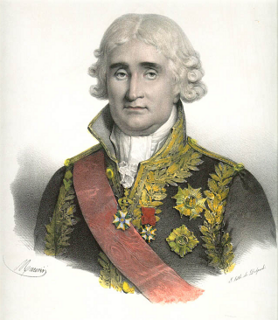A la Cambacérès
Inigo Thomas
Escalope de foie gras à la Cambacérès, roughly speaking, is a piece of toast covered with an apple purée and a slice of foie gras placed on top, the escalope already dusted with flour and briskly fried without oil or butter. A Madeira sauce – reduced beef stock with some of that fortified wine – is poured over it all. (A warning: this completely misrepresents the dish. There shouldn't be anything rough about it. A Madeira sauce isn’t something you can rustle up in moments.)
A recipe for a dish of the same name in Larousse gastronomique has no apples but does have artichoke hearts, mushrooms and several ‘thick slices’ of truffle. In Escoffier’s Guide culinaire the dish includes pasta.
It goes beyond foie gras. The New York Public Library's catalogue of old restaurant menus reveals a Salade Cambacérès served onboard the SS France in 1973. In 1966, Siegward R. Osicki, head chef of the Astrojet Room – American Airline’s restaurant at JFK – had Suprême de Turbot Cambacérès on his menu. Kingfish Cambacérès cost a dollar at the Waldorf Astoria in 1933, and so did the Long Island Brook Trout Cambacérès at the Ambassador Hotel, while over at the Pierre there was English Sole Cambacérès for two at $2.75.
That last dish is somewhat oxymoronic: Cambacérès doesn’t refer to any culinary technique or ingredient, but to the politician, lawyer and French revolutionary whose pride in the lavishness of his table arose from his conviction that good government depended on a good kitchen: ‘the Great Object in Life’, he called it. Jean-Jacques-Régis Cambacérès was the author of the first draft of the Napoleonic Code as well as the mastermind behind its implementation. As second consul, he ran France while Bonaparte went about his wars. There are thousands of books on Napoleon, very few on Cambacérès, and in English almost none. North of the Channel, it’s as if the French Revolution and its consequences must always end with Napoleonic defeat, while its achievements – government without religion, the civil code – get less attention.
‘To dine like a soldier, come to dinner with me,’ Napoleon is supposed to have said. ‘If you wish to dine like an emperor, have dinner with Cambacérès.’ According to some stories Napoleon’s coup on 18 Brumaire was plotted over supper at Cambacérès’s table.
The emperor ate quickly. ‘No one will accuse Napoleon of being an indulger in the pleasures of the table,’ Cambacérès wrote. ‘His morning meal consisted of eggs and a bean salad... When he ate longer than 20 minutes at dinner, he considered it quite an orgy.’ One of Cambacérès’s twice-weekly dinners, by contrast, lasted from 5.30 until 10, included 24 guests, and was followed by a much larger salon at his spectacularly grand home, the Hôtel Roquelaure on the Boulevard St Germain (now the ministry of ecology and sustainable development).
The ingredients for Cambacérès’s kitchen came from all over France. Dinner was served in two courses, of 18 dishes each. When authorities in Paris impounded an enormous consignment of trout from Geneva headed for the Hôtel Roquelaure, Napoleon had the the ruling overturned; and when he declared that the postal service couldn’t be used by public officials to transport their private food supplies, he made an exception for Cambacérès. ‘Do not distress yourself, my dear Cambacérès,’ he allegedly said, ‘the couriers shall continue to bring you your turkeys stuffed with truffles, your Strasbourg pâtes, your Mayence hams, and the rest of it.’ One-third of Cambacérès’s household expenditure went on his kitchen. In 1806 he spent 115,959 francs (a vast sum) on cooks and ingredients. How he spent it, how he ate it – though you could say he was only doing what he was told. Dining, eating, impressing were all part of the imperial campaign. Giving the impression that there were no longer problems with France’s food supply, when there were – that too may have been part of the intention.
Talleyrand’s cook, Marie-Antoine Carême, claimed that the term pièce de résistance originated with the Revolution; it didn’t, but Carême did more than anyone else to introduce grand nomenclature into cuisine, and to bring pièces de résistance to the table: à la Rothschild, à la Marc Antoine, à la Kléber, à la Frederick II. By the end of the 19th century there was Pêche Melba, Steak Rossini, Eggs Arnold Bennett. When exactly Cambacérès’s name was first given to a dish, I don’t know, but the implication was that it was grand and French.
Today’s menus tend to emphasise geography, and where ingredients are from: Cornish crab and Upstate onions are in, though the nomenclature is no less symbolic. Ragout Bernie Ecclestone, however – that's unlikely.
